The queue for the 206 bus to Kiyomizu-dera is long, but the buses come every minute or so, and there are people with helpful signs in English to direct tourists.
At the entrance a dragon keeps watch over the water, and you’re invited to wash your hands and mouth – as per ritual- and proceed inwards.
It may be the busiest site, but it does have a viewing platform that can carry hundreds of people, while they all take snapshots of the city of Kyoto in the horizon. This, of course, tells us all we need to know about the strength of the Zelkova (Keyaki) and Japanese Cypress (Hinoki) trees that support the whole structure. You could say the master crafters nailed their task, though no such metallic fixtures are to be found in its structure, or within the vicinity!
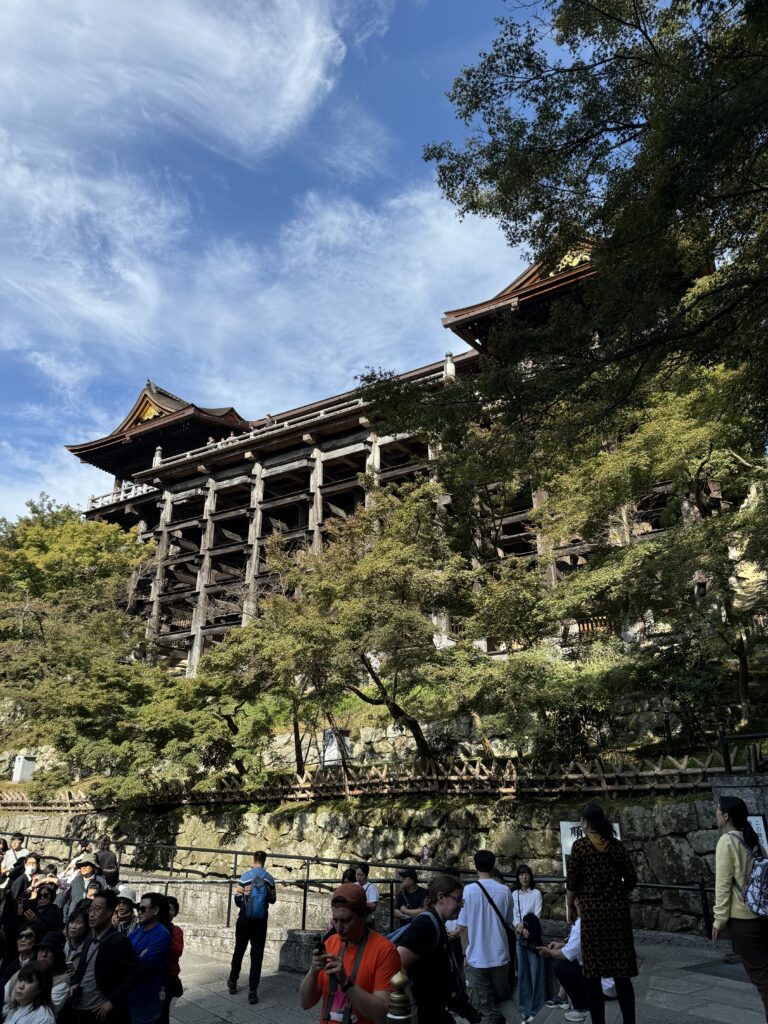
This is where you truly step into the light. Historically, performances and worship ceremonies dedicated to Kannon have been held on this stage.
Following the trail of tourists, and taking a snapshot at those who are taking snapshots, I find myself at the well of wishes. There’s three wells you can drink from: one for longevity, one for academic achievement and one for good luck in love. You can only pick one, dear Reader, but you do have enough time to consider which, as you wait for everyone to fill in their long ladles (disinfected with UV light!) with water. So excited is everyone, making sure to pose for the occasion that I don’t think they’re paying attention which well they are drinking from.
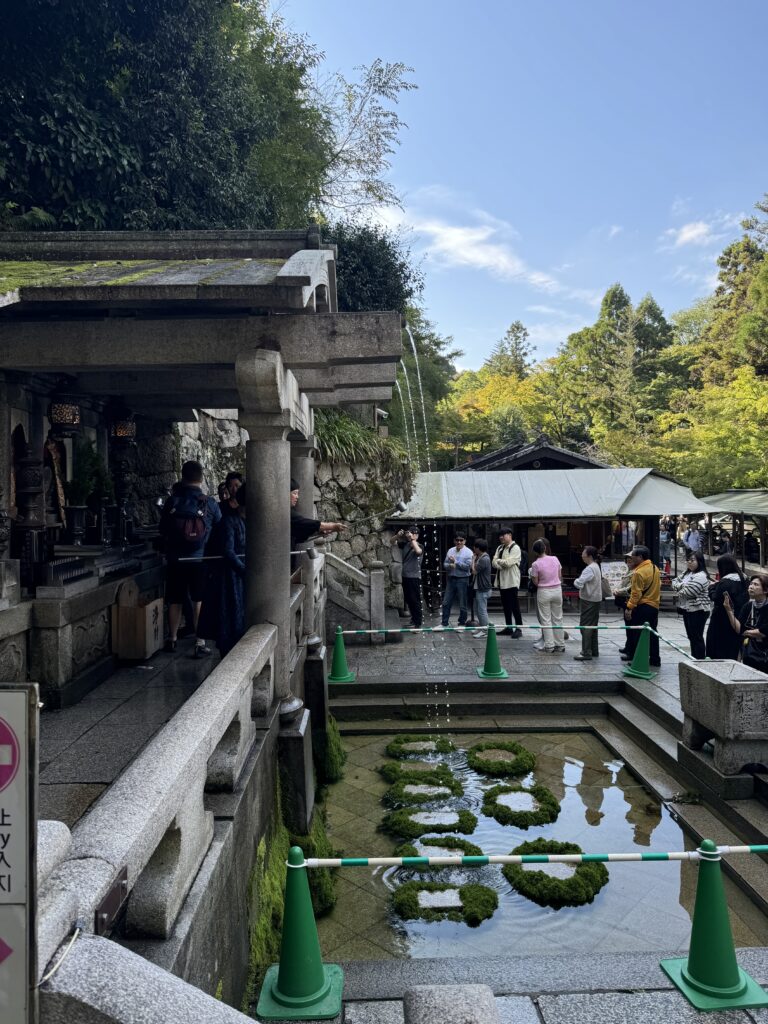
There is a steady flow of people going in and out of the temple, and few of them take a seat for some tea and sweets. Instead, most head off to the nearby Ninenzaka and Sannenzaka Streets. I, too, am one of them.
“I didn’t have time to write a short letter, so I wrote a long one instead.”
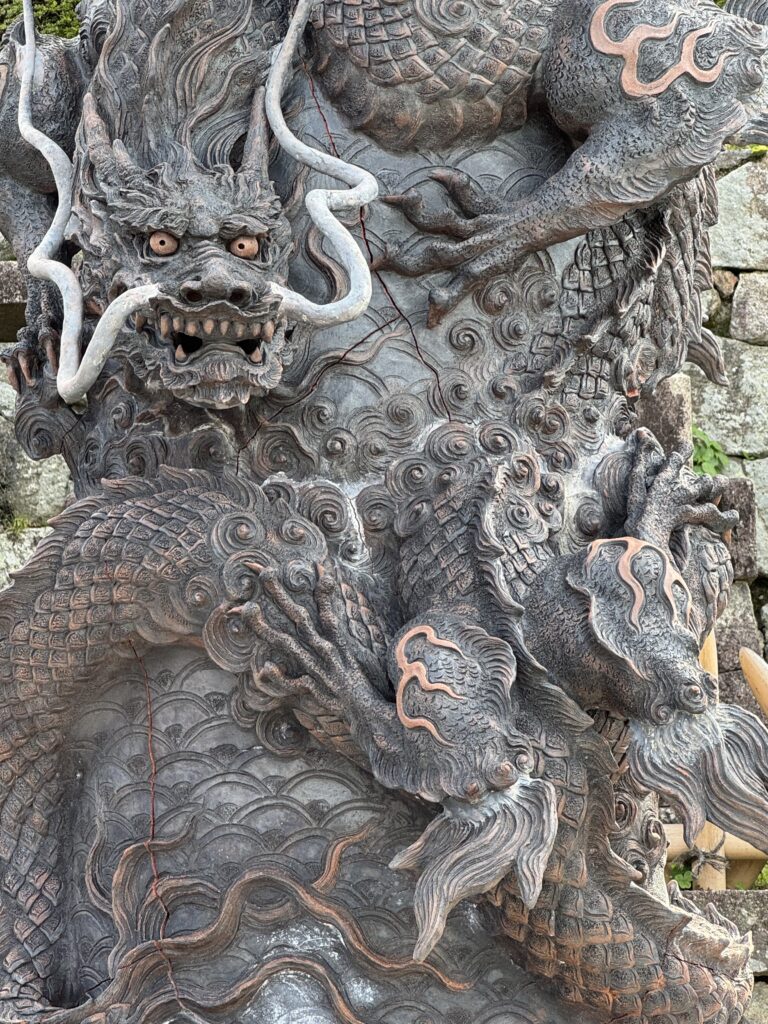
Kodai-ji Temple
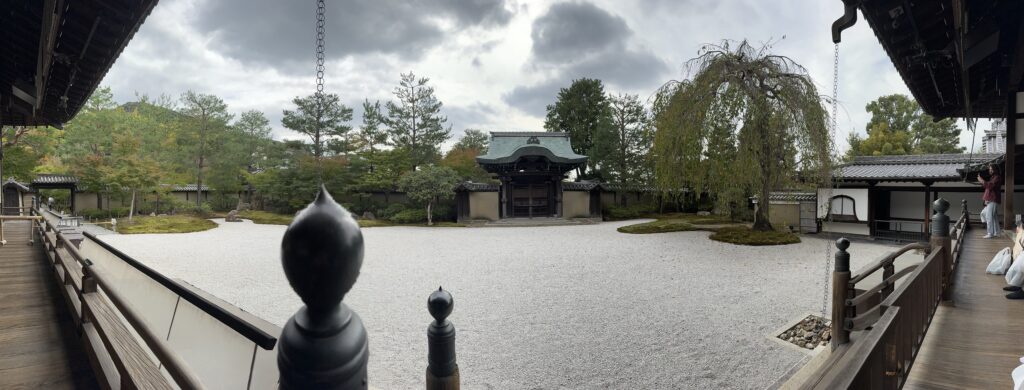
This is another temple with lots of history. Built for the principal wife of Toyotomi Hideyoshi, Nene, by the next daimyo (lord) in power, Tokugawa Ieyasu (he did establish the Tokugawa Shogunate afterwards). This was a very clever lady indeed, who supported her husband while alive, and held enough power to lend her support to Tokugawa after her husband’s death. This guaranteed her survival and that of her family.
KYOCERA Museum of Art
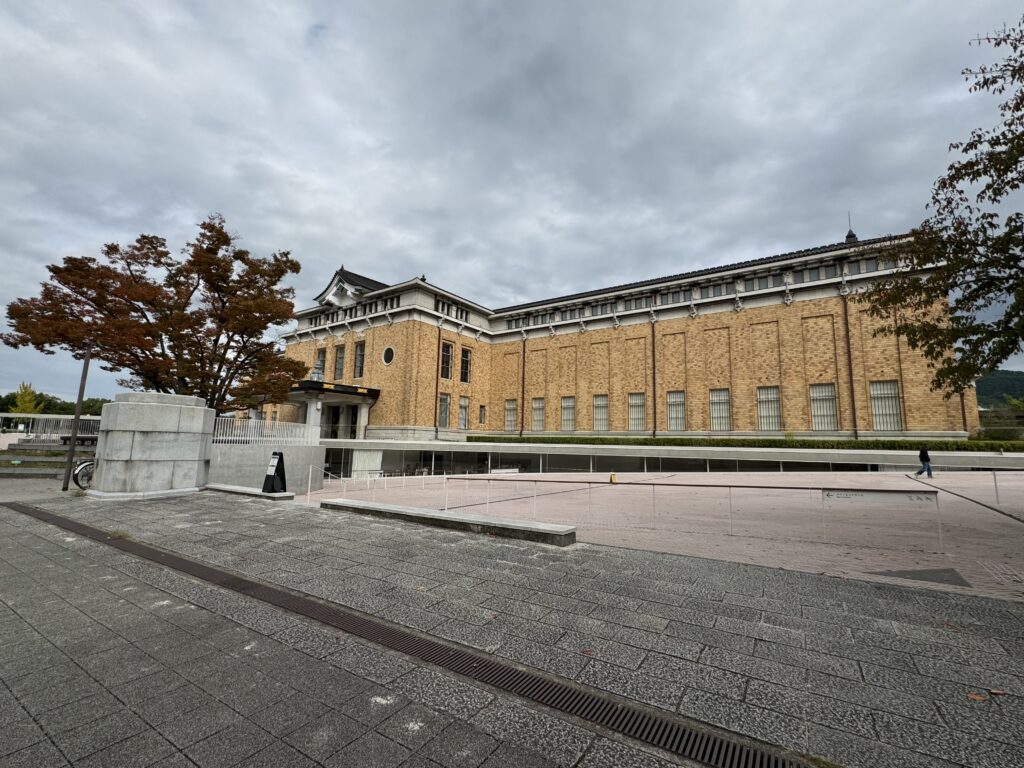
I went to the special exhibition with early artworks and graduation pieces of more than 40 renowned painters who studied in the Kyoto City University of Arts, and its predecessors: the Kyoto Prefectural school of Painting, the Kyoto City School of Arts and Crafts, and the Kyoto City Technical School of Painting.
There was a ‘no photography’ rule with the exception of 5 paintings, one of which was also the poster. A pity, for there were artworks I wish they’d made postcards of, but this was not the case. I was also told I couldn’t take pictures of the captions, so aside from a title and the name of the painter, I did not get much from individual captions.
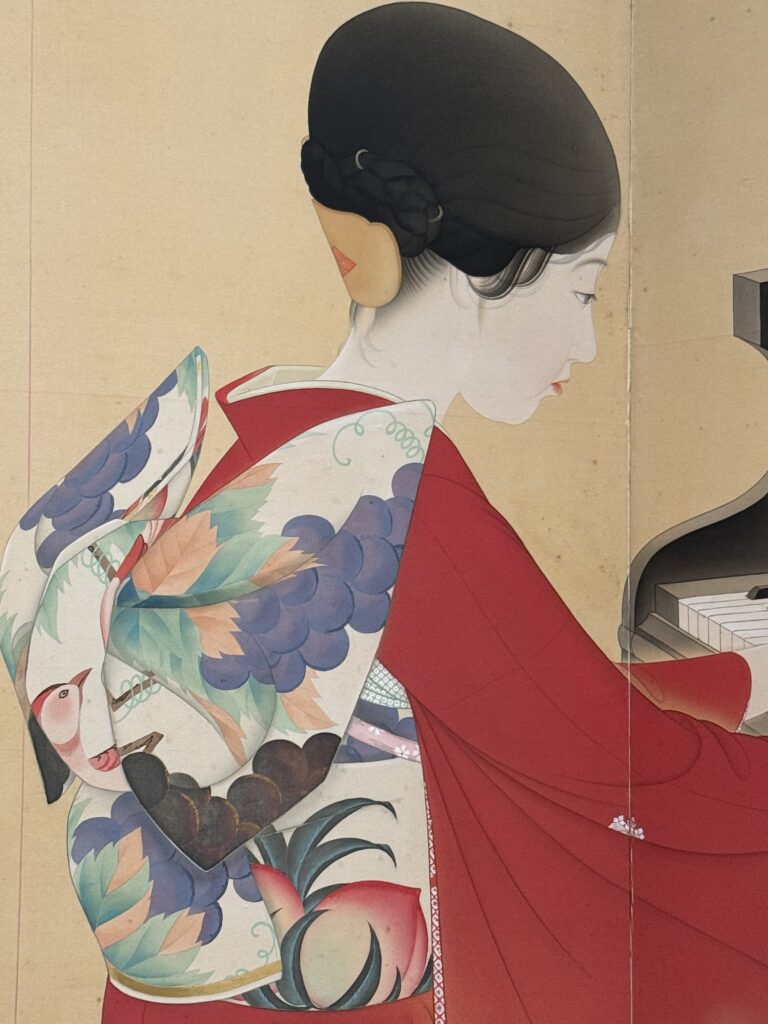
There was a beautiful catalogue, with all the paintings. Alas, if I get into bringing books back with me, how to chose between which to pack, and which to leave.
Kyoto Handicraft Centre
You can buy all sorts of related souvenirs here, from fans, and pottery-ware, to t-shirts, lacquer boxes, jewellery, and bento boxes. Here, on the 3rd floor I was transported to an Agatha Christie film set, no detective on sight, but several actors vying for the role of Mrs Boynton, Lady Westholme, and family. There was no member of staff around, and the ‘if they’re cousins, put a sea of distance between us’ folk, where having a ‘I’m on a cruise, just stepped off the boat for a quick bargain’ moment.
My cute Kokeshi doll bento box secured, I headed back for the day.

Good to see you are keeping an eye on the gallery interpretation.
I am puzzled. Was it an actual Agatha Christie film set? It seems somehow possible.
I am loving the pics.
It is if you just pay attention to the dialogue, and close your eyes. Alas, Dame Maggie was not there to remind many a one about manners.
A very thorough insight! Super travel info! Great photos, too!
Keep up with the good work!!!!
Thanks for reading!